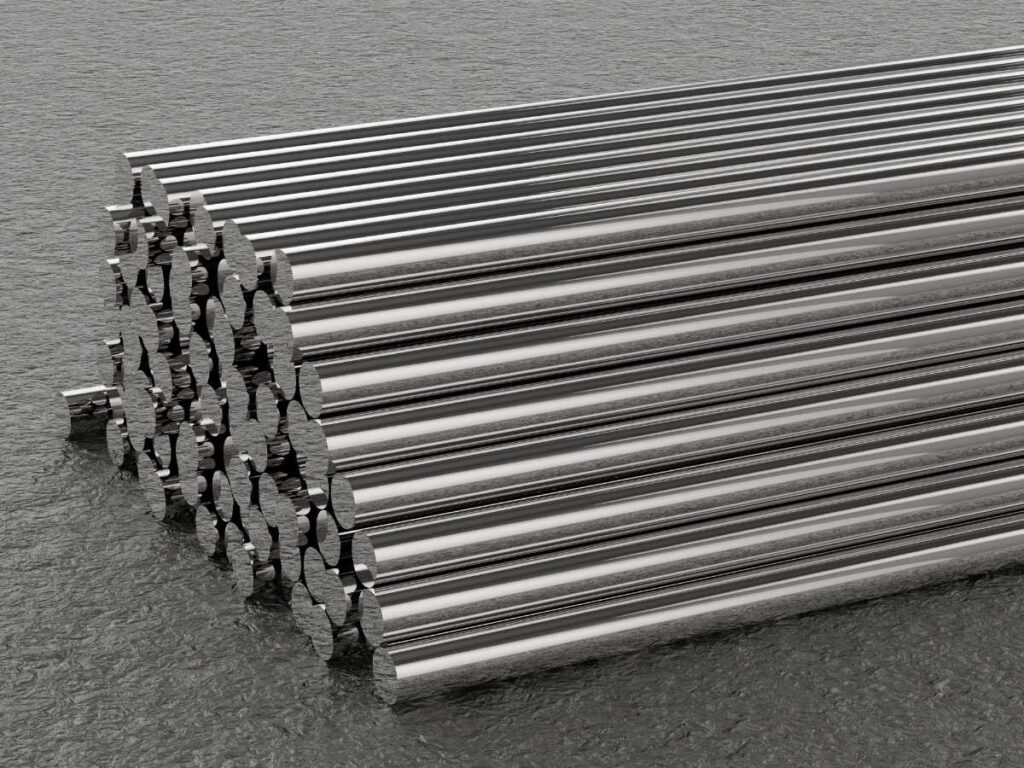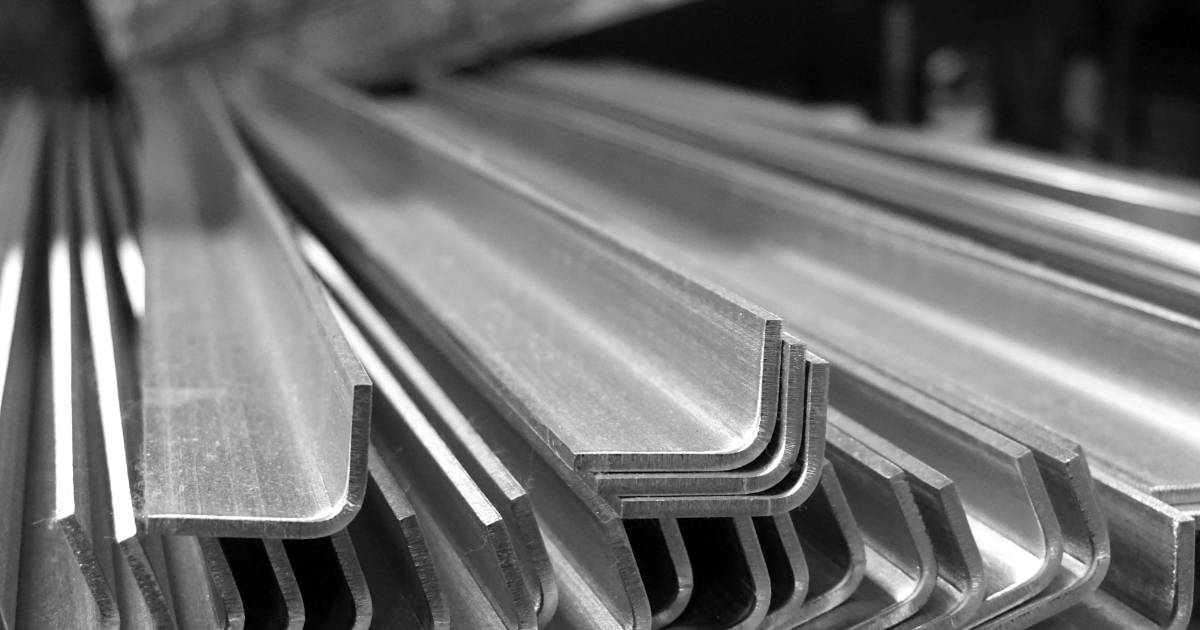Aluminum, a lightweight and versatile metal, plays a role in numerous industries owing to its unique properties and wide range of applications.
Aluminum, symbolized by Al on the periodic table, is a metallic element known for its remarkable properties. With a low density and high strength-to-weight ratio, it is a lightweight material with exceptional durability and flexibility. These qualities make aluminum ideal for many automotive, aerospace, construction, packaging, and electronics applications.
Various Sectors Utilizing Aluminum
In the automotive sector, aluminum is widely used to manufacture components such as engine blocks, wheels, and body panels, contributing to improved fuel efficiency and reduced vehicle weight. In the aerospace industry, aluminum’s strength and corrosion resistance make it a preferred material for aircraft structures, ensuring safety and reliability. Additionally, in the construction field, aluminum is employed for windows, doors, and facades due to its malleability, weather resistance, and aesthetic appeal.
Transitioning to the packaging industry, aluminum’s lightness and ability to maintain the freshness of perishable goods make it an excellent choice for beverage cans, food containers, and foil packaging. Furthermore, aluminum’s excellent thermal conductivity and electrical properties make it indispensable in the electronics industry, where it is used for heat sinks, wiring, and printed circuit boards.
Aluminum is an excellent metal that has become indispensable in various industries. Its unique combination of lightweight construction, strength, and corrosion resistance makes it an essential material for automotive, aerospace, construction, packaging, and electronics applications.
Properties of Aluminum
Physical Properties
Aluminum’s fascinating physical properties contribute to its widespread use in various industries.
- Aluminum possesses a relatively low melting point and boiling point, allowing it to transform at accessible temperatures. This property enables easy casting and shaping processes in manufacturing aluminum-based products.
- Aluminum boasts a relatively low density, significantly lighter than many other metals. This lightweight attribute is highly advantageous in industries that require materials with high strength-to-weight ratios, such as aerospace and automotive.
- Aluminum exhibits excellent electrical and thermal conductivity. It efficiently transfers heat and electricity, making it ideal for heat sinks and electrical wiring applications.
- With its high reflectivity, aluminum is widely used in mirrors, reflective coatings, and lighting fixtures, enhancing energy efficiency and brightness. Furthermore, aluminum demonstrates remarkable ductility and malleability. This can be formed into various shapes and sizes without losing structural integrity. This malleability facilitates the production of intricate designs in industries like construction and packaging.
Chemical Properties
Aluminum possesses intriguing chemical properties that contribute to its versatility and durability.
Aluminum exhibits a unique reactivity with oxygen. It forms a thin oxide layer on its surface upon exposure to air. This acts as a protective barrier against further oxidation. This oxide layer prevents aluminum from rusting, unlike many other metals, ensuring its longevity and resistance to corrosion.
Speaking of corrosion resistance, aluminum demonstrates exceptional durability in various environments. Its oxide layer protects against moisture, chemicals, and even harsh weather conditions. This property makes aluminum preferred for outdoor structures, such as bridges, buildings, and marine applications.
The chemical properties of aluminum can be enhanced and modified through alloys. By combining aluminum with other elements, such as copper, zinc, or magnesium, the resulting alloys exhibit specific properties tailored for different applications. For instance, aluminum alloys with magnesium offer increased strength and lightness, making them ideal for the aerospace and automotive industries.
Aluminum Alloys

Definition and Importance of Alloys
Alloys, which are combinations of aluminum with other elements, play a role in enhancing the properties of aluminum for specific applications. By blending aluminum with elements like copper, zinc, magnesium, or silicon, alloys can modify their characteristics to meet diverse requirements. This process results in the creation of new alloys that surpass the properties of pure aluminum.
The significance of alloys lies in their ability to improve critical properties of aluminum, such as strength, hardness, corrosion resistance, and thermal conductivity. For example, aluminum-magnesium alloys offer a lightweight yet high-strength solution, making them highly valuable in industries like aerospace and automotive. Similarly, aluminum-copper alloys combine the corrosion resistance of aluminum with the enhanced strength and heat conductivity of copper, making them ideal for applications in electrical wiring and heat exchangers. Furthermore, aluminum-silicon alloys excel in casting properties, catering to the needs of the automotive and manufacturing sectors.
Types of Aluminum Alloys
Wrought Alloys
Aluminum alloys can be broadly categorized into different series based on their composition and properties.
The 1000 series consists of pure aluminum, with excellent corrosion resistance and high thermal conductivity, making it suitable for electrical applications and chemical processing industries.
The 2000 series alloys incorporate copper and exhibit high strength and excellent fatigue resistance, making them ideal for aerospace and military applications.
These alloys contain manganese and offer good formability, corrosion resistance, and moderate strength, commonly used in cooking utensils and chemical equipment.
The 4000 series alloys contain silicon, have low melting points, and are primarily used for welding applications.
In the 5000 series, alloys with magnesium as the primary alloying element offer high strength, good weldability, and excellent corrosion resistance, making them prevalent in marine and structural applications.
The 6000 series alloys, incorporating silicon and magnesium, possess good formability and excellent corrosion resistance and are widely used in architectural and automotive applications.
With high strength and exceptional toughness, the 7000 series alloys, primarily alloyed with zinc, are commonly utilized in aerospace and sports equipment.
The 8000 series alloys are characterized by their unique properties, such as low coefficient of thermal expansion, making them suitable for specialized applications like electrical conductors.
Cast Alloys
Aluminum alloys offer a wide range of possibilities, and within the wrought alloys category, we find various series with distinct characteristics and applications.
Starting with the 200 series, these alloys typically contain copper as the primary alloying element, offering good formability, high strength, and excellent fatigue resistance, making them well-suited for aerospace and military applications.
Moving on to the 300 series, which incorporates manganese as the primary alloying element, these alloys offer a balance of strength, formability, and corrosion resistance, making them popular choices for automotive components, household goods, and architectural structures.
In the 400 series, silicon is the primary alloying element. These alloys have low melting points and are mainly used for welding applications due to their excellent weldability and ability to match the thermal expansion of the base metal.
The 500 series, with magnesium as the primary alloying element, provides a good combination of strength, formability, and corrosion resistance, making them commonly used in structural components, marine applications, and transportation industries.
Lastly, the 700 series alloys, primarily alloyed with zinc, exhibit high strength and excellent toughness, making them ideal for aerospace applications and in producing sporting equipment like baseball bats and bicycle frames.
Alloying Elements and Their Impact on Properties
Aluminum alloys derive their unique properties from the incorporation of various alloying elements.
Copper, a commonly used alloying element, enhances the strength and hardness of aluminum alloys, making them suitable for applications requiring high mechanical performance, such as aerospace components and structural materials.
Magnesium, another element, provides lightweight characteristics to aluminum alloys. It improves the strength-to-weight ratio, making alloys with magnesium ideal for automotive parts, aircraft structures, and sporting goods.
Silicon imparts excellent fluidity and casting properties when added to aluminum, making aluminum-silicon alloys widely used in automotive engine components, such as cylinder heads and pistons.
Zinc is often an alloying element to enhance aluminum’s strength and corrosion resistance. Aluminum-zinc alloys find applications in marine environments, architectural structures, and electrical conductors.
Other elements like manganese and chromium are utilized in aluminum alloys to enhance specific properties further. Manganese contributes to improved strength, while chromium enhances corrosion resistance and provides stability at high temperatures.
These alloying elements, along with others such as nickel, titanium, and lithium, play vital roles in tailoring the properties of aluminum alloys to meet the demands of diverse industries and applications.
Alloy Characteristics and Applications
Aluminum has impressive properties, contributing to its widespread use in various industries.
- Aluminum exhibits remarkable strength and durability, making it suitable for demanding applications that require structural integrity and long-term reliability.
- Aluminum’s excellent corrosion resistance protects it from rust and deterioration caused by exposure to moisture, chemicals, and harsh environmental conditions.
- Aluminum demonstrates exceptional thermal conductivity, efficiently transferring heat and making it an ideal material for heat sinks, radiators, and other heat transfer applications.
- Aluminum showcases excellent electrical conductivity, allowing for efficient electricity transmission. This property is valuable in electrical wiring, power distribution, and electronics.
- Aluminum’s lightweight nature makes it highly sought after for applications where weight reduction is best, such as aerospace, automotive, and transportation. Despite its low density, aluminum retains impressive strength and structural integrity.
Industrial Applications of Aluminum Alloys

Transportation Industry
The transportation industry heavily relies on aluminum due to its unique properties and benefits. Let’s explore how aluminum plays a pivotal role in various sectors within this industry.
The automotive sector extensively utilizes aluminum in the manufacturing of vehicles. Aluminum’s lightweight nature improves fuel efficiency, allowing cars to go farther with less energy. Aluminum’s strength and durability make it an excellent choice for structural components, enhancing safety and crashworthiness.
In the aerospace industry, aluminum is a preferred material for aircraft construction. Its low density reduces weight, enabling airplanes to achieve better fuel economy and increased payload capacity. Aluminum’s corrosion resistance ensures the longevity and reliability of aerospace structures, even in harsh environments.
Aluminum’s corrosion resistance and lightweight properties are ideal for marine applications. From leisure boats to commercial vessels, aluminum provides strength, durability, and resistance to corrosion from saltwater exposure. Aluminum’s versatility allows for the construction of hulls, superstructures, and various components, ensuring reliable and efficient performance on the water.
Construction Industry
The construction industry relies heavily on aluminum for a wide range of applications.
In building structures, aluminum’s strength and durability make it an excellent choice for various components. From beams and columns to window frames and curtain walls, aluminum provides stability while allowing creative and versatile designs.
In facades and cladding, aluminum’s aesthetic appeal, lightweight nature, and corrosion resistance make it a popular choice.
Aluminum panels can be easily installed, enhancing the visual appeal of buildings while offering protection against the elements.
Roofing and siding benefit from aluminum’s durability and resistance to corrosion. Aluminum roofs and sidings provide long-lasting protection, withstanding harsh weather conditions and requiring minimal maintenance.
Additionally, aluminum’s lightweight nature significantly reduces the overall weight of construction materials. This advantage translates to cost savings regarding transportation, installation, and structural requirements.
Electrical and Electronics Industry
The electrical and electronics industry heavily relies on aluminum. Aluminum is widely used for wiring and cables due to its excellent electrical conductivity. Aluminum wires efficiently transmit electricity, making them suitable for power and distribution systems.
Electrical enclosures benefit from aluminum’s strength, durability, and corrosion resistance. Aluminum enclosures protect sensitive electrical components from external factors while ensuring reliable performance and longevity.
Heat sinks, essential for dissipating heat in electronic devices, often utilize aluminum. Aluminum’s high thermal conductivity allows for efficient heat transfer, preventing overheating and ensuring the optimal functioning of electronic components.
Aluminum’s lightweight nature makes it advantageous in the electrical and electronics industries. Lighter components reduce overall weight and improve portability, making aluminum a preferred choice for portable electronics and electrical devices.
Packaging Industry
The packaging industry relies on aluminum for its unique properties and benefits, particularly in the areas of food and beverage packaging, as well as pharmaceutical packaging.
Aluminum offers several advantages. Its excellent barrier properties protect the contents from moisture, oxygen, and light, ensuring the freshness and quality of perishable goods. Aluminum cans, bottles, and foils are commonly used for packaging beverages, canned foods, and snack products.
In the pharmaceutical industry, aluminum is essential in packaging sensitive medications. Aluminum foil provides a secure barrier against moisture, air, and light, preserving the integrity and effectiveness of pharmaceutical products. It is commonly used for blister packs, strip packs, and other forms of medication packaging.
Aluminum packaging is lightweight, making it convenient for transportation, storage, and handling. Its durability ensures that products remain protected throughout the supply chain. Aluminum packaging is also recyclable, promoting sustainability and reducing environmental impact.
Other Industries
Aluminum’s versatility extends beyond the previously mentioned industries.
In the realm of sports and recreation, aluminum is a go-to material. It is used to construct bicycles, baseball bats, tennis rackets, and camping equipment. Aluminum’s lightweight nature enhances performance and maneuverability while providing durability and resilience.
Consumer goods also benefit from aluminum’s properties. It is utilized to manufacture appliances, furniture, and various household items. Aluminum’s sleek appearance, corrosion resistance, and ease of customization make it a popular choice for creating stylish and functional consumer goods.
Aluminum plays a significant role in the renewable energy sector. It produces solar panels, wind turbine components, and energy-efficient windows. Aluminum’s lightness, durability, and recyclability align with sustainability and clean energy generation principles.
Advancements and Future Trends

Research and development in aluminum alloys is a dynamic field that continuously strives to enhance the properties and performance of this versatile material. Innovations in alloy composition and manufacturing techniques have led to exciting advancements.
One area of focus is lightweight, aiming to reduce the weight of structures and products while maintaining or improving their strength. Aluminum’s inherent lightweight nature makes it an ideal candidate for such endeavors, as it enables fuel efficiency in transportation, reduces material consumption, and contributes to sustainability efforts.
In line with lightweight, researchers are exploring new alloy compositions further to enhance aluminum’s mechanical and functional properties. By incorporating elements like lithium, titanium, or rare earth metals, engineers are developing alloys with improved strength, corrosion resistance, and thermal stability, expanding the range of aluminum applications.
Researchers are working to address issues such as corrosion resistance, joining techniques, and the recyclability of aluminum alloys.
Unleashing the Infinite Potential of Aluminum
Aluminum’s unique combination of properties, such as strength, durability, corrosion resistance, and lightweight nature, has positioned it as a material of choice across diverse industries. From transportation to construction, electrical and electronics to packaging, aluminum’s versatility and performance have revolutionized these sectors.
Aluminum’s potential developments and applications are vast. As technology advances and new challenges arise, researchers are exploring novel alloy compositions, manufacturing techniques, and surface treatments to optimize aluminum’s properties further and overcome existing limitations.
Our Locations
Get a Quote Now


